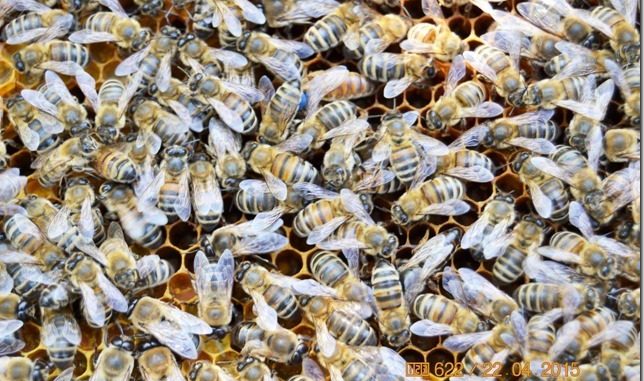
We are at the end of September and feeding should be well under way or finished by now. Last week the weather was summerlike and it was possible to inspect colonies to assess them and move empty frames around for the bees to fill. Bees seem to lose interest with the outside frames during feeding so can go into winter with ones or two empty frames. Placing full ones close to the wall and moving empty ones nearer to the nest encourages bees to fill these frames. By filling all available frames can mean the difference to a colony surviving the winter or dying out!
However, don’t be tempted to leave a feeder on a colony well into winter, especially if it already feels heavy enough. Doing this allows bees to store syrup in cells as the adult bees emerge thereby preventing the queen from laying in them. This means the size of the brood nest becomes smaller and smaller with potentially not enough winter bees for the colony to survive the winter. Or, if it does survive it is very weak in springtime and struggles to build up.
Knowing when a colony has sufficient stores is not easy to convey in these notes but comes from experience I’m afraid. Remove the roof (to give a more accurate idea of weight) and lift the brood box. I expect it to weigh around a sack of potatoes, i.e. 25kg. Unfortunately not everybody knows what a sack of potatoes feels like but that is the best I can do.
Once a colony has enough stores I return a super if I think the apiary will have a strong ivy flow. It appears that bees do not overwinter that well if they have a lot of ivy honey so I prefer the bees to place it in a super which is removed when ivy has finished flowering.
Looking through colonies last week I noted that most of them have a few frames of brood which will produce the winter bees. So bees will be bringing in pollen to feed the brood and a lot of it is ivy pollen. So don’t place mouseguards on hives for a while as they can knock off the pollen load from a forager. Generally it is better to place mouseguards after the first frost which hopefully will be several weeks away.
Whilst placing mouseguards it is a good idea to net hives at the same time to prevent access by woodpeckers. I also place a two inch thick piece of insulation under the roof and over the crown board to help retain heat. If solid floors are used then this should not be done as it may prevent adequate ventilation.
If you treated for varroa with strips, pads or trays remember to remove them when treatment time has elapsed. This can prevent mite resistance developing especially if Apivar, Apistan or Bayvarol were used.
Finally, if you are new to beekeeping and go to your bees later in autumn to place mouseguards on the hive, do make sure you are wearing protective clothing. A colony can appear very inactive lulling the beekeeper into thinking “I’ll just put this place with a couple of staples and job done”. As soon as the guard is placed against the hive wall bees often tumble out quite enraged at being disturbed on a cold autumn day. So do put on your beesuit – it could save you from a serious stinging incident!
